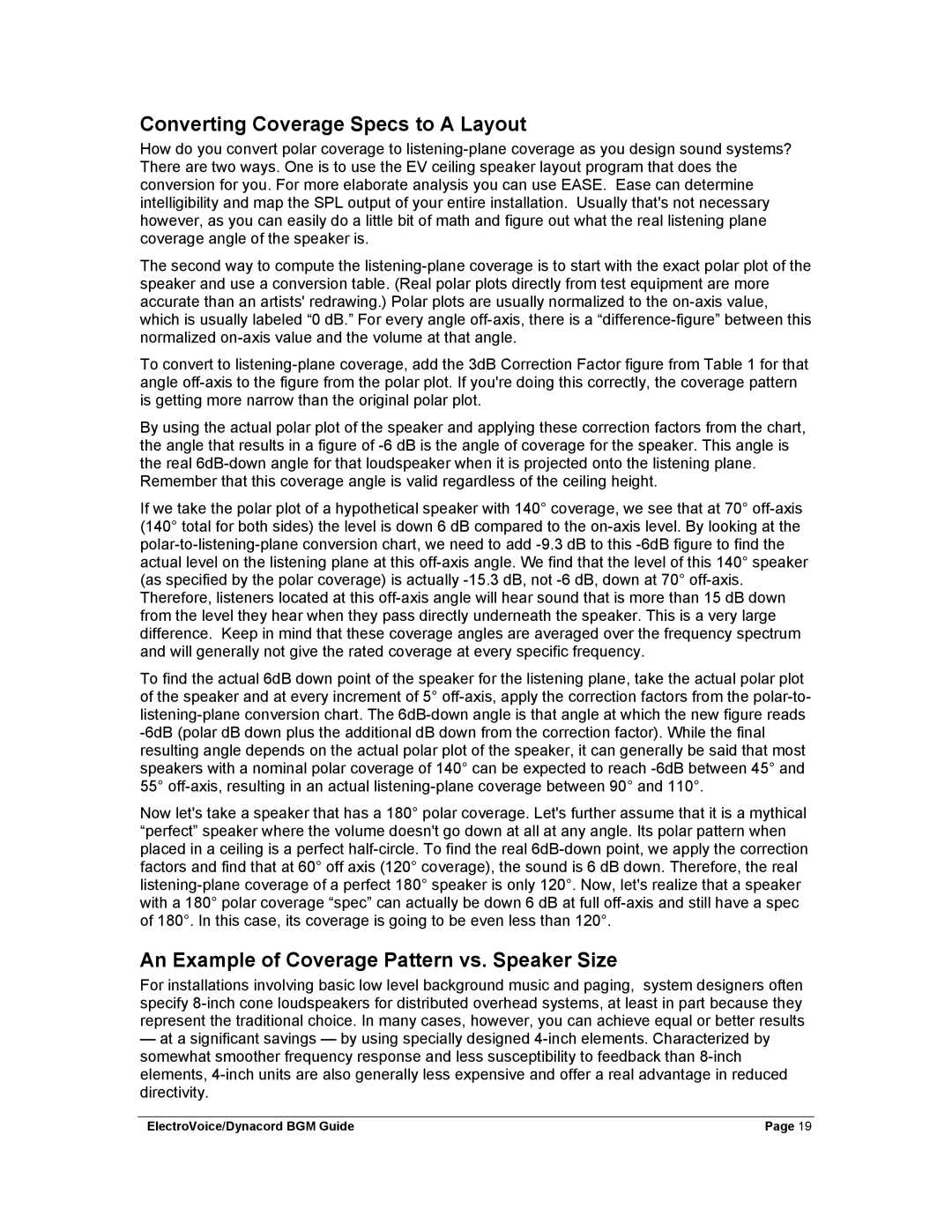Stereo System specifications
The Dynacord Stereo System is a remarkable audio solution designed for audiophiles and professionals seeking superior sound quality and versatility. Renowned for its exceptional engineering, Dynacord emphasizes clarity, power, and precision in all of its products, and this stereo system is no exception.One of the standout features of the Dynacord Stereo System is its advanced digital signal processing technology. This allows for precise tuning of audio output, ensuring that users experience optimal sound quality regardless of the input source. The system includes various presets tailored for different environments, whether it’s a small room or a large auditorium. This flexibility makes it ideal for both personal and professional settings.
Another significant characteristic of the Dynacord Stereo System is its robust build quality. Constructed from durable materials, the system is designed to withstand rigorous usage, making it a reliable choice for mobile DJs, event organizers, or even studio applications. Additionally, the aesthetics of the system are both modern and stylish, fitting seamlessly into any décor.
The Dynacord Stereo System also features a powerful amplification system. With a high output capacity, the system delivers rich, dynamic sound that fills the space without distortion. It supports a wide frequency range, allowing users to enjoy everything from deep bass to crisp highs, making it versatile for various music genres.
Connectivity is another strong point of the Dynacord Stereo System. The system is equipped with multiple input options, including Bluetooth, USB, and traditional analog inputs, offering convenience for connecting various devices such as smartphones, computers, and instruments. The Bluetooth capability also allows for seamless wireless streaming, further enhancing its usability.
In addition to its audio performance, the Dynacord Stereo System includes user-friendly controls and settings. The intuitive interface allows for easy adjustment of volume, tone, and effects, making it accessible for users of all experience levels. Whether you’re a casual listener or a seasoned sound engineer, the Dynacord system caters to all.
In conclusion, the Dynacord Stereo System stands out with its exceptional sound quality, durable construction, versatile connectivity options, and user-friendly features. This system is not only designed to meet the needs of audio professionals but also aims to enhance the listening experience for everyone. Whether at home, a concert venue, or on the go, the Dynacord Stereo System delivers a powerful performance that truly elevates audio enjoyment.
